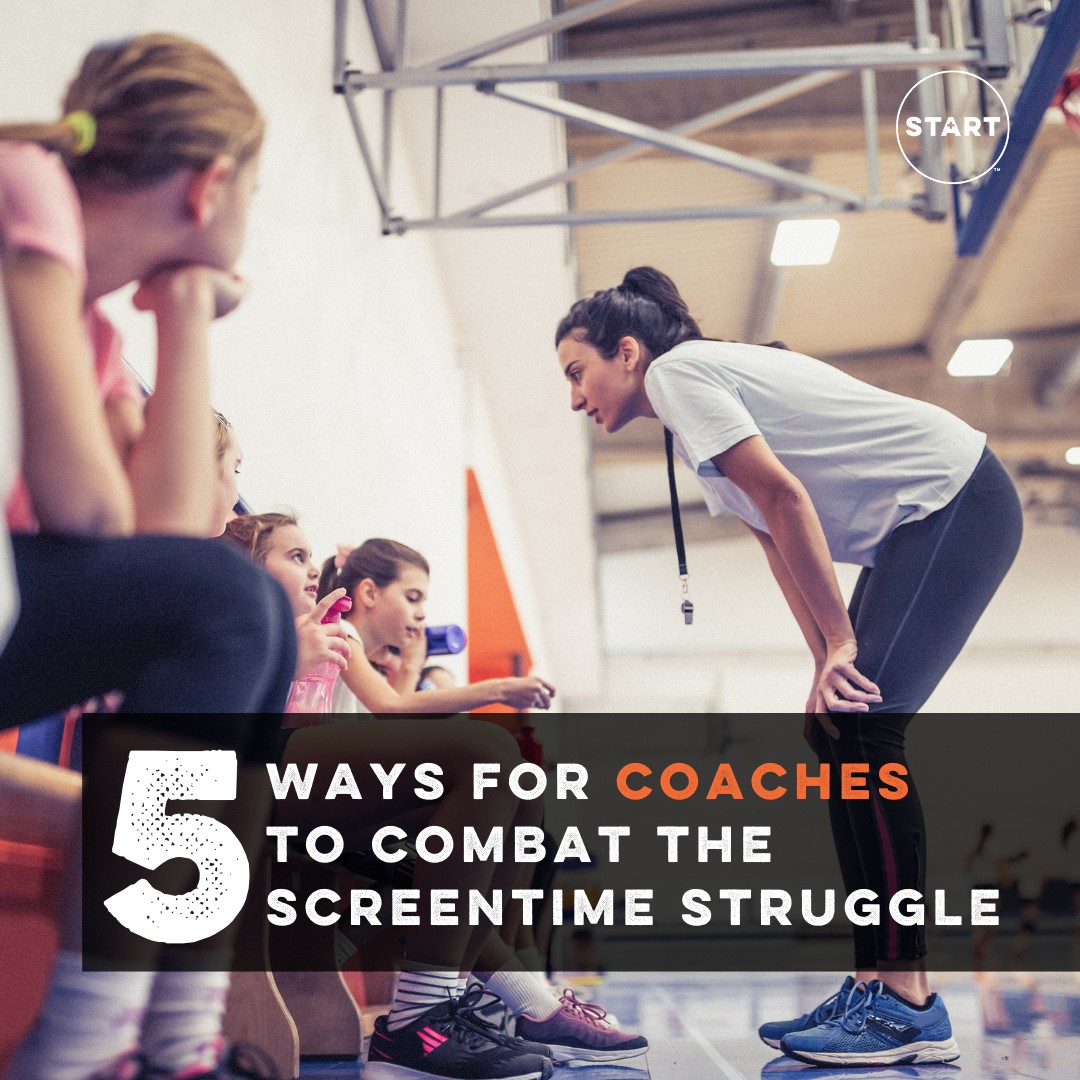
Screen Sanity is proud to announce our new partnership with Positive Coaching Alliance (PCA), a national nonprofit that promotes positive youth sports culture in all communities across the U.S. Together, we will share parent and coach resources, curriculum and tools to keep kids focused on the game, not screens.
The positive effects of participating in youth sports are innumerable, yet there is a distracting new teammate causing disengagement among today’s athletes—the smartphone. Instead of focusing on the game, players run to the bench to check their phones for notifications. Instead of practicing drills outside, teens spend hours inside scrolling through social media.
On top of that, our children are in the midst of a mental health crisis due to the stress, isolation and increased screentime that came along with the COVID-19 pandemic. A 2021 international study by researchers at The University of Queensland found that “higher levels of screentime and lower levels of physical activity were associated with lower life satisfaction and higher psychosomatic complaints among adolescents.”
So how can coaches combat the screentime struggle? How do they keep athletes engaged and smartphones off the sports field?
START recommends five rules of thumb—aligning to the letters of our organization’s name—as guiding principles of digital health. These principles can foster practical conversations between coaches, athletes and parents.
S: START WITH YOURSELF
Coaches are some of the most influential role models in a child’s life, and if we want to change the way our youth use screens, coaches need to model the behavior themselves. Studies show the average person checks a smartphone 80 times per day, and if we’re doing that in front of our children, they will mimic that behavior. No one is perfect, but an honest look at our own digital habits is a first step toward building empathy and trust.
T: TURN-IN ZONES
Decrease interruptions and increase engagement by establishing device-free zones at practices, games and competitions. Perhaps you create a team bin for housing phones during sporting events, or you require athletes to keep their devices in their gym bags as soon as they reach the locker room. Setting boundaries will keep everyone on the same page. The benefits of disconnecting during practice are powerful, and can promote better focus, performance and connection with the team.
A: ACCOUNTABILITY
Recent research reveals that only 14% of youth have ever had a meaningful conversation about technology with a trusted adult. Listen to your athletes and keep an open ear for challenges or issues they are having online. Social media pressure, cyberbullying and dangerous content are common risks for kids online, and the best thing we can do is give them a safe, trusted space for open conversation.
R: RIDE. PRACTICE. DRIVE.
Before an athlete’s first game, you teach them the fundamentals of the sport and the techniques to help them succeed. And when you teach a child to drive, you log hours by their side to equip them with the needed skills. In the same way, tech requires an intentional training process. We encourage parents to take a “driver’s ed” approach to phone introduction, starting with basic, unloaded devices (such as the GizmoWatch or Gabb Wireless phone) before jumping head-first into fully loaded smartphones.
T: TIME WELL SPENT
One of the most meaningful things you can do for your athletes is help them understand the value of their time and attention. Be intentional about deepening connections with your athletes and team, both online and offline. If you communicate with your athletes in between practice via social apps, be purposeful and thoughtful about how and when you’re sending messages. Let kids be kids by giving them the space and time to be captivated by life—not screens.
If you’re looking for more ways to improve and understand digital health, please check out START’s Screen Sanity Group Study, Social Media Playbook and parent guide library.